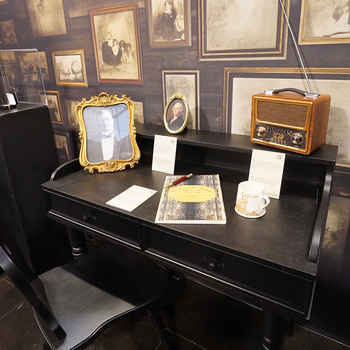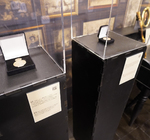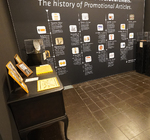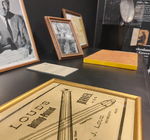
SAVE THE
DATE
Harley Davidson Days Hamburg // 26.6..-1.7.24
10 years Cybergroup BeachCup // 29.6.24
Harley Davidson Days Swiss // 3. - 8.7.24
Mustang Meeting Swiss // 2. - 4.8.24
MoPA - The history of promotional items
 We will take a journey back in time to the Stone Age and then while exploring different eras of human history continue to the present day, since in a variety of ways advertising has been around already for thousands of years.
We will take a journey back in time to the Stone Age and then while exploring different eras of human history continue to the present day, since in a variety of ways advertising has been around already for thousands of years.Already in the Stone Age, wall paintings were used to record and pass on information. Furthermore the people in the Stone Age used also their stolen loot or carved tools to draw attention to themselves and thus demonstrate strength.
Around 3,500 BC the artists of ancient Egypt for example, used to stamp their pottery with an identifying mark before selling it. This early form of a logo then differentiated them from their competition. In Mesopotamia, carved stone cylinder seals were rolled over clay to leave a mark. These printed clay tablets, as well as stamp seals and signet rings used together with sealing wax, were the first ways for traders to mark their goods or indicate ownership using images.
In the Middle Ages, market places, where market shouters attracted attention with various advertising messages, gained in importance. The term “advertising”, which is derived from the Latin word “reclamare”, actually comes from this time. The word Werbung (advertisement) comes from the old German word “hwerban” and means something like “to make an effort” “to look around”.
After the invention of paper, and ultimately of the revolutionary printing press, it became the new advertising medium. The first edition of a daily newspaper was successfully launched in the middle of the 17th century. With that advertising became a form of mass media for everyone.
Probably the first advertising medium in history were the promotional buttons accompanying George Washington's inauguration as the first president of the newly founded United States in 1789. Unlike our modern advertising buttons or pins, this was an actual button that was sewn onto coats. And they weren't free either. Instead of giving them away, these pins were actually sold by the enterprising button manufacturers.
When chromolithography was invented in 1837 it became the means to decorate signs, snuff boxes, and colorful bookmarks made from ribbon or silk. Anheuser-Busch was one of the first brands to actively use promotional items in their marketing. In 1852, the founder Adolphus Busch sent his salespeople to the taverns to distribute branded corkscrews to their customers.
Jasper Meek is considered the “father of promotional products”. He said, “Give a person something they need and they will be grateful to you.” In difficult times, around 1886, he kept his newspaper printing press running by making burlap sacks for a small business in Coshocton, Ohio. These were the firstpromotional bags ever used!
In the early 20th century, custom-made bottle openers were popular promotional items of choice for beer and soda brands, right along with pens imprinted with company names and addresses. Among the first printed t-shirts were the t-shirts worn by the three residents of the Emerald City in 1939's The Wizard of Oz.
In 2000, the USB flash drive was introduced and has almost completely replaced the floppy disk and CD for portable data storage. And as a promotional product, well, companies found out that they can load USB sticks with information that they wanted their customers to have at their fingertips.








